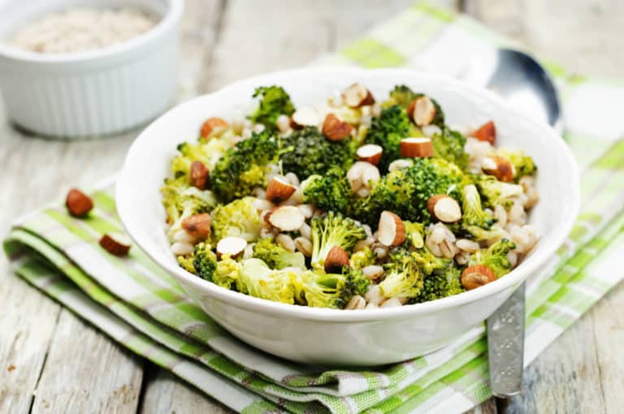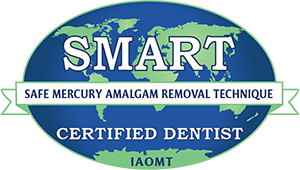The human body has a variety of microbiomes, the largest and second largest of which are in the gut and the oral cavity, respectively. These microbiomes do not function independently but are related in a complex manner. For example, oral bacteria responsible for tooth decay and periodontal disease might make their way into the digestive tract, where they can impact the gut microbiome.
Our bodies are a collection of interrelated systems. Our overall health is affected by our gut health, which in turn is related to our oral health. This means that having one microbiome out of balance can have a cascading effect across the body. One method of encouraging the growth of healthy bacteria in our gut and oral microbiomes lies with prebiotics. So, what exactly are prebiotics?
Prebiotics: What are They and What Do They Do?
Prebiotics exist naturally in the foods we consume, and they promote the growth of healthy bacteria in our bodies. To be more specific, a prebiotic is a substrate (a molecule upon which an enzyme acts) used by the host microorganism in a manner that promotes health. They are resistant to digestion, passing through the stomach and small intestines to the colon. Once there, they will ferment, increasing the number of healthy bacteria in the gut.
Although many prebiotics are considered a type of dietary fiber, not all fibers can be called prebiotics. Specifically, insoluble fiber, which helps keep you regular and moves food quickly through the stomach and intestines, is typically poorly fermented and thus not a true prebiotic.
Among prebiotics, the most studied are types of soluble fiber such as inulin, fructooligosaccharides, and galactooligosaccharides. Unlike insoluble fiber, soluble fiber will break down in water to form a gel-like substance which acts to slow digestion. Other fibers that are digestible by our gut bacteria include beta-glucans and resistant starches. Given that the number of prebiotics makes it difficult to list them all, a general rule of thumb to follow is that if it is soluble fiber, it is a prebiotic.
Finally, prebiotics that are not types of fiber have been identified recently, including the polyphenols found in fruits and tea, as well as long-chain omega-3 fatty acids (EPA and DHA present in fish). Some foods that contain prebiotics include:
Fructans. Inulin and fructoologosaccharies can be found in foods such as asparagus, banana, garlic, and onions.
Galactooligosaccharides can be found in beans, lentils, broccoli, and chickpeas.
Resistant Starches are present in plantains and green bananas, beans, peas, seeds, and cold oatmeal.
Beta-glucan exists in barley, oats, mushrooms, and seaweed.
Polyphenols can be found in a multitude of fruits, especially berries. They are also present in dark chocolate, red wine, broccoli, and spinach.
Omega-3 Fatty Acids come from fatty fish, such as salmon, trout, tuna, and herring.
The Effect of Prebiotics on the Oral Microbiome
Originally, the definition of prebiotic was not expansive enough to include those that modulated microbiomes other than the gut. Today, the definition is more inclusive, as they can modify any microbiome in the body.
Specific compounds have been found to meet the definition of a prebiotic, as they increase the proportion of beneficial bacteria and reduce pathogenic species. These compounds are not found in foods in any significant amount. Xylitol and arabinose may be capable of stimulating the growth of certain lactobacilli that can help to inhibit pathogens related to dental caries, candidiasis, and periodontal disease.
At some point in the future, these prebiotic compounds may find their way into products such as gum, toothpaste, mouth rinses, and more, though it is necessary to find a means of keeping the prebiotic in the oral cavity long enough for fermentation to occur. Xylitol gum and mints have been on the market for some time, and they can achieve this goal. However, it is believed that for xylitol to be effective in the prevention of caries, an intake of 5 to 7g per day in multiple doses throughout the day is required. To reach this threshold would require that 2 pieces of gum be chewed after breakfast, lunch, and dinner. Consuming too much can be an issue, however, potentially causing gas, bloating, and diarrhea.
How Else do Prebiotics Relate to Oral Health?
To be clear, there is still research to be done regarding oral prebiotics, but we are able to examine the effect prebiotics have on our oral health in less direct ways, such as through the alteration of the gut microbiome.
For example, P.gingivalis is a pathogen indicated in gum disease. It has also been shown to create an imbalance in the gut microbiome, which is often associated with disease. It has been found in those suffering from conditions such as obesity, cardiovascular disease, and metabolic disorders. When prebiotics were administered, they were shown to counteract alterations in the gut microbiome, correlating with greater energy intake, insulin resistance, and improvement in cholesterol and triglycerides, all resulting in an improvement in metabolic health.
Evidence exists to show that gum disease is related to changes in the gut microbiome. One study revealed that those with periodontal disease had a less diverse gut microbiome than those with healthy gums. Since gum disease is a chronic inflammatory disease that correlates with gut bacteria imbalances, this leads to the question of how improving our gut microbiome might improve our oral health.
It is well known that obesity and type 2 diabetes are risk factors for gum disease, and these diseases are also associated with chronic inflammation. Prebiotics can assist in the treatment of these diseases as they can improve insulin resistance, assisting with weight loss. Accordingly, prebiotics can be said to indirectly assist in the prevention of periodontal disease by reducing the associated risk factors of obesity, chronic inflammation, and type 2 diabetes.
While it is not yet clear how changing our gut microbiome might directly affect our oral health, conditions like obesity and diabetes negatively impact oral health, and oral health is related to systemic disease. Prebiotics that improve our gut microbiome support our systemic health, in turn influencing our oral health.
Prebiotics and their Impact on Oral Health
There are a host of prebiotics and they can have different effects, but listed below are some of the general ways that they can benefit oral health:
They Help Prevent “Leaky Gut†and Associated Inflammation
The term “leaky gut†is used to describe a condition in which harmful substances are able to more easily pass through the intestinal wall and reach other parts of the body. P. gingivalis is known to alter the gut microbiome, resulting in leaky gut. This results in a greater amount of toxins in the blood which in turn make the body more prone to inflammation. During fermentation of prebiotics, bacteria produce short-chain fatty acids that can strengthen the intestinal barrier, keeping harmful bacteria from reaching the bloodstream.
They Assist With Weight Loss
Prebiotic intake may affect the release of hormones that trigger satiety—the feeling of being full. Fructooligosaccharides are known to increase the concentration of hormones that regulate appetite control, and when participants in a study were asked to consume 16 g oligofructose per day for 13 days, it was noted that calorie intake decreased significantly. By helping to maintain a healthy weight, prebiotics can help reduce the risk of periodontal disease, given that excessive fat tissue can increase systemic inflammation by secreting adipokines.
They Regulate Blood Glucose
Patients with uncontrolled blood glucose levels have a greater risk of periodontal disease, but this relationship goes both ways, as periodontal disease may also impact blood glucose levels in a negative manner. Prebiotics can modify the gut microbiome in a way that helps with insulin control, in turn helping to manage or reduce the risk of diabetes and periodontal complications.
Increasing Your Prebiotic Intake
As mentioned above, there are many prebiotics which are also types of dietary fibre. This means that increasing your intake of these types of fibre therefore also increases your prebiotic intake. The recommended daily intake of fibre in USA is 25 g for women and 38 g for men between 19 and 50 years of age. For many, their actual intake is below this level, at about 16 g for women and 19 g for men.
Some foods to help with fibre—and thus prebiotic—intake include:
1 tbsp of chia seeds (5 g of fibre)
1/2 cup of raspberries (4 g of fibre)
1 cup quinoa (6 g of fibre)
1/2 cup of lentils (8 g of fibre)
1 cup of cooked broccoli (4 g of fibre)
1 serving of oatmeal (4 g of fibre)
1/4 cup of almonds (4 g of fibre)
The new USA food guide promotes the consumption of more plant-based proteins, fruits, vegetables, and whole grains in an effort to increase fiber intake. It is recommended that half of each meal be comprised of fruits and vegetables, with whole grains making up another 1/4. The final 1/4 can be plant-based proteins, such as lentils and legumes, both of which provide significant amounts of protein and fiber.
USA does not currently offer guidelines on the intake of prebiotics.
Although prebiotics occur naturally in certain foods, they can also be used as fat or sugar replacements. They are added to several processed foods including cereal and cereal bars, ice cream, and baked goods. This does not indicate that these foods are necessarily healthy, however. The consumption of whole foods in place of processed foods is preferable, as whole foods also contain vitamins, minerals, and other healthy components, without the sugar, fat, and salt typically added to processed foods. Additionally, consuming 5 or more servings of fruit and vegetable per day may help prevent tooth loss and the development of gum disease.
Noting the benefits of prebiotics, some will seek to add them to their diet in the form of supplements, though consuming large amounts of these supplements can lead to side effects such as gas, bloating, and cramps, as bacteria produce gas when metabolizing these food components. These side effects will diminish over time as your body adjusts, however. Starting with small doses of supplements and increasing gradually over the course of a few weeks can help manage these side effects. It is also important to ensure that you are consuming enough liquids, as fiber will trap water with it as it passes through the digestive system.
Key points to take away:
Consume a diet rich in prebiotics by following USA’s Food Guide, which encourages the consumption of plant-based proteins (1/4 of your meal), whole-grains (1/4 of your meal), and fruits and vegetables (1/2 of your meal).
Increase the consumption of prebiotics from whole foods. This includes fruits and vegetables, as well as whole grains, which are full of amino acids, fatty acids, vitamins, and minerals.
Polyphenols (readily available in berries and tea) and omega-3 fatty acids (from fish oil) are not fiber but do have prebiotic properties. They may also have anti-inflammatory properties.
If it is proving difficult to reach the recommended daily intake of fiber, consider prebiotic supplements, available over the counter.
If taking prebiotic supplements, start with a low dose and gradually increase each day to avoid side effects such as bloating and gas. You may also split the dosage up into smaller doses throughout the day.
Increase your fluid intake with your fiber intake.
Whether you increase your prebiotic fiber intake by following the USA Food Guide or by taking a supplement, you are supporting your overall health, and may also be helping to stave off periodontal disease and oral cavities.





